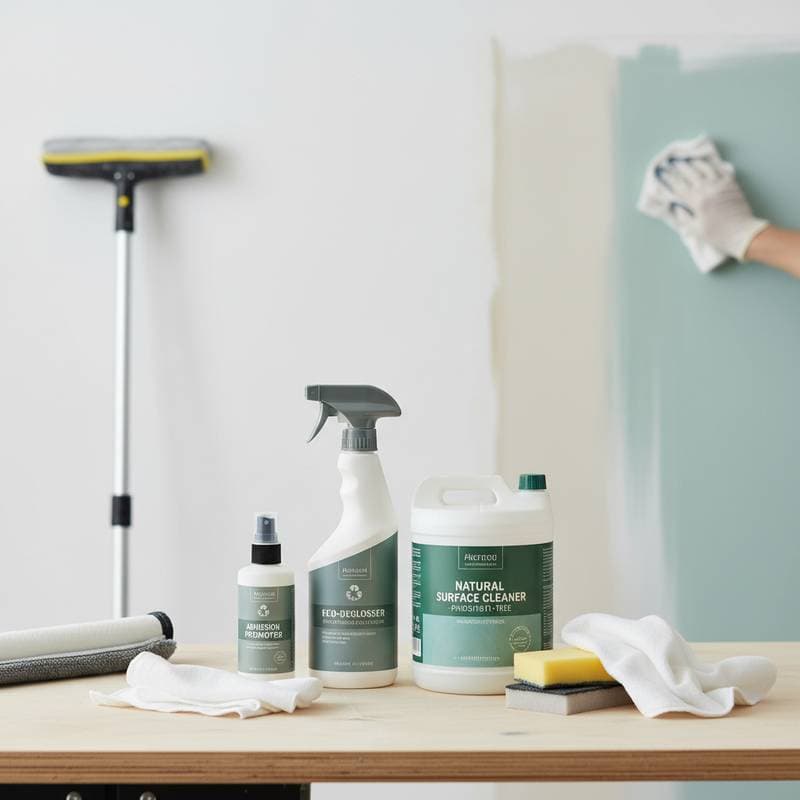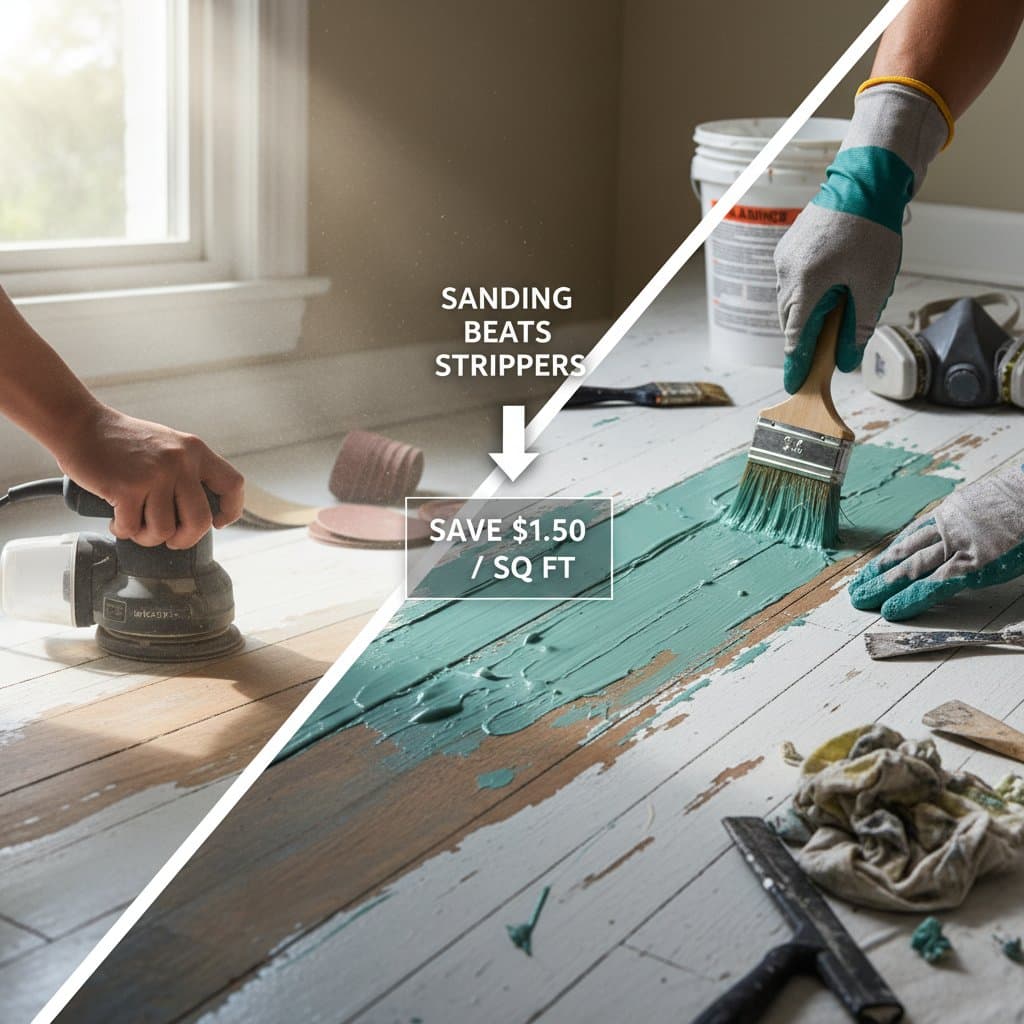Understanding the $500 Impact of TSP Restrictions on Surface Preparation
Regulations limiting trisodium phosphate, known as TSP, have introduced unexpected challenges for homeowners and contractors alike. TSP served as a reliable, affordable option for degreasing and cleaning surfaces before painting, effectively removing contaminants that could compromise adhesion. With its phosphate content posing risks to waterways, bans have prompted a switch to safer substitutes, which elevate overall preparation expenses by an estimated $300 to $500 for typical home projects. This shift underscores the need for informed planning to preserve both environmental responsibility and financial efficiency.
Grasping these changes empowers you to budget accurately and achieve professional-grade results without excess expenditure.
Typical Costs for Surface Preparation
Preparation for interior or exterior painting generally ranges from $1 to $4 per square foot, influenced by surface condition and chosen materials. For a modest room of 200 square feet, expect $200 to $800 total, covering cleaning and priming steps. Larger endeavors, such as whole-home exteriors, often exceed $1,000, particularly when TSP alternatives demand more intensive application.
These figures account for variables like regional labor rates and project scale, ensuring realistic expectations from the outset.
Breaking Down Costs Per Square Foot
To navigate expenses effectively, consider this detailed allocation:
- Materials: $0.30 to $1.00 per square foot, covering cleaners, sponges, and protective gear.
- Labor: $0.70 to $2.00 per square foot, reflecting time for application, rinsing, and drying.
- Preparation and Containment: $0.20 to $0.50 per square foot, including drop cloths, ventilation, and waste management.
- Additional Factors: $0.10 to $0.50 per square foot, for tasks like specialized stain removal or regulatory compliance.
Summing these elements reveals how alternatives amplify totals compared to traditional methods.
Key Influences on Surface Preparation Expenses
Several elements determine the final price tag, each tied to practical project demands.
Product Selection
TSP's low cost, around $0.10 per diluted gallon, made it a staple, but alternatives like phosphate-free degreasers range from $0.50 to $2.00 per use. These options, often plant-based or enzyme-driven, necessitate higher volumes or extended soaking periods, up to 30 minutes longer per section. Selecting concentrated formulas can mitigate some increases, but testing compatibility with your surface remains essential for optimal performance.
Surface Condition
Surfaces with accumulated grease from kitchens or mildew in bathrooms require robust treatment. Without TSP's potency, crews apply layered washes, potentially doubling effort on stubborn spots. Assess your walls beforehand; a quick wipe test with mild soap can gauge if professional intervention proves necessary.
Regional Regulations
In areas with stringent water quality laws, such as coastal states, TSP prohibitions extend to disposal protocols, adding $100 to $300 for certified waste handling. Contractors must document compliance, sometimes requiring permits that inflate administrative time. Verify local guidelines through your environmental agency to anticipate these hurdles early.
Labor Expertise
Experienced painters adapt techniques, like using pressure washers with eco-solutions, to match TSP efficacy without excess scrubbing. While their rates hover 20 to 30 percent above novices, this investment averts callbacks for peeling paint, which could cost $500 or more in repairs. Prioritize certified professionals for complex jobs to safeguard long-term durability.
Cost Comparison Across Cleaning Methods
Evaluate options through this structured overview:
| Cleaning Type | Basic Range (per sq ft) | Standard Range (per sq ft) | Premium Range (per sq ft) | Notable Traits |
|---|---|---|---|---|
| TSP-based | $0.80–$1.50 | $1.50–$2.00 | $2.00–$2.50 | Quick action, strong results, restricted in many locales |
| Phosphate-free | $1.00–$2.00 | $2.00–$3.00 | $3.00–$4.00 | Reduced environmental impact, demands more application time |
| Eco-certified | $1.50–$2.50 | $2.50–$3.50 | $3.50–$4.50 | Biodegradable formulas, surface-friendly, higher initial outlay |
This table highlights trade-offs, guiding selections based on your priorities for speed versus sustainability.
Quantifying the Shift Away from TSP
For a standard 2,000-square-foot home repaint, the $500 premium arises from $200 in elevated materials, $200 in prolonged labor, and $100 in disposal adherence. These increments vary by project scope but consistently reflect the transition's broader implications. Tracking receipts during prep phases allows precise monitoring of these dynamics.
Long-Term Benefits and Investment Returns
Eco-friendly cleaners not only comply with laws but also minimize plumbing clogs and ecosystem harm, avoiding fines up to $1,000. Superior preparation fosters better paint bonding, potentially extending job longevity by 3 to 5 years and reducing repaint frequency. Calculate your ROI by dividing prep costs against avoided maintenance, often yielding savings within two years.
Practical Tips to Control Preparation Costs
Implement these strategies to trim expenses while upholding standards:
- Integrate Multifunctional Cleaners: Opt for solutions that degrease and neutralize gloss in one step, cutting application rounds by half.
- Perform Initial Manual Cleaning: Sweep away dust and wipe with dish soap to lessen chemical needs, saving 20 to 30 percent on products.
- Purchase Bulk Supplies: Concentrated eco-cleaners in gallon sizes drop costs to $0.20 per square foot, versus retail singles.
- Schedule Strategically: Book during shoulder seasons like spring or fall, when labor dips 10 to 15 percent due to lower demand.
- Delegate Tasks Wisely: Tackle accessible flat surfaces yourself, reserving pros for textured or elevated areas to blend savings with expertise.
Adopting a mix of these approaches can offset much of the TSP-related upcharge.
Building a Realistic Budget for Preparation
Start by measuring your project's square footage and estimating base costs at $2 per square foot for alternatives. Allocate 15 percent for contingencies, such as unforeseen residue or supply fluctuations. Consult quotes from three contractors, specifying eco-compliance, to compare inclusive pricing. This methodical approach ensures your funds align with deliverables, preventing mid-project surprises.
Common Questions on TSP Alternatives and Costs
What Drives the $300 to $500 Cost Increase from TSP Bans?
The premium stems primarily from pricier phosphate-free products and the additional 1 to 2 hours of labor per 500 square feet needed for thorough cleaning. Disposal requirements further contribute, especially in regulated zones. For smaller jobs, the hit might total $150, scaling with project size.
Which Elements Most Influence Preparation Expenses?
Product type leads, followed by surface grime levels, local rules, and crew proficiency. For instance, a greasy garage doubles labor over a clean bedroom. Balancing these through site inspections helps forecast accurately.
How Do I Cut Prep Costs While Maintaining Quality?
Begin with homeowner-led pre-washes using vinegar solutions on low-stain areas, then apply concentrated cleaners sparingly. Source deals on bulk eco-products online or at hardware stores. This hybrid method often reduces bills by 25 percent without risking adhesion issues.
Is DIY with TSP Alternatives Feasible, or Should I Hire Pros?
DIY suits simple, small-scale cleans if you follow dilution instructions to avoid over-application, which can etch surfaces. Professionals excel with industrial tools and knowledge of residue testing, ensuring flawless prep. Weigh your time against their $50 to $100 hourly rate for the best fit.
How Much Buffer Should I Add for Prep Overruns?
Reserve 10 to 15 percent of your painting budget, or $200 to $400 for a $3,000 job, to handle surprises like hidden mold. This fund covers extra materials or extended drying in humid conditions. Review progress weekly to adjust as needed.
When Does Scheduling Prep Yield the Lowest Rates?
Target non-peak periods, such as early fall or late winter, when crews seek steady work and offer discounts. Mild temperatures accelerate drying, shortening timelines by a day or two. Coordinate with your painter for availability windows that align with these savings opportunities.
Achieving Efficient, Eco-Friendly Painting Outcomes
Navigating TSP alternatives demands attention to detail, but the rewards include compliant, resilient finishes that enhance your home's value. By selecting vetted products and leveraging cost controls, you secure professional results at a manageable price. This balanced strategy not only meets regulatory demands but also promotes sustainable practices for future projects.



